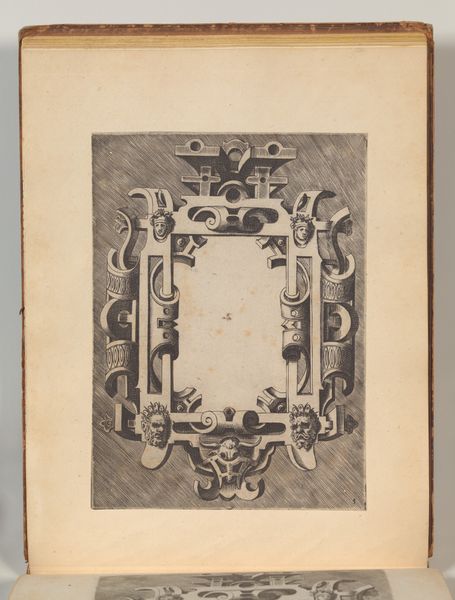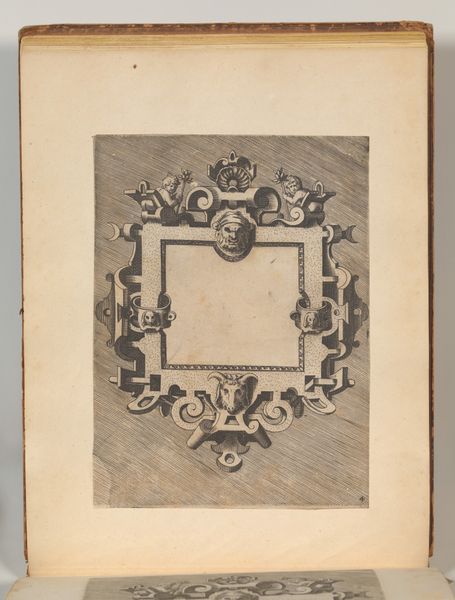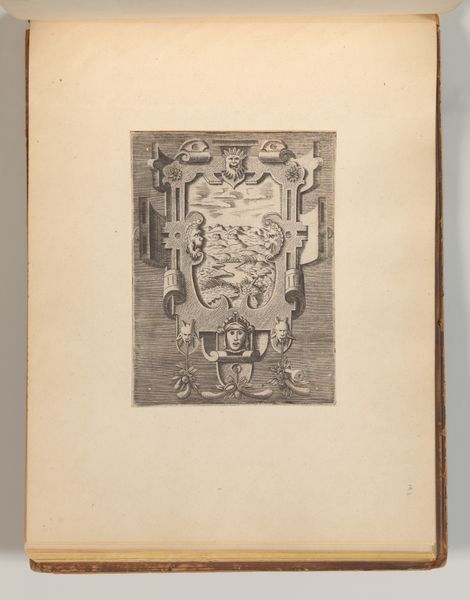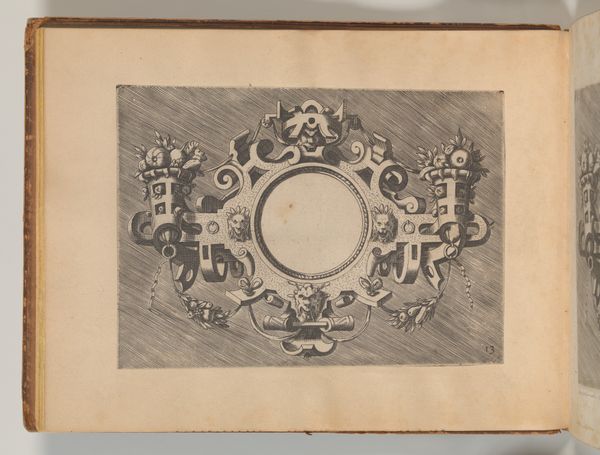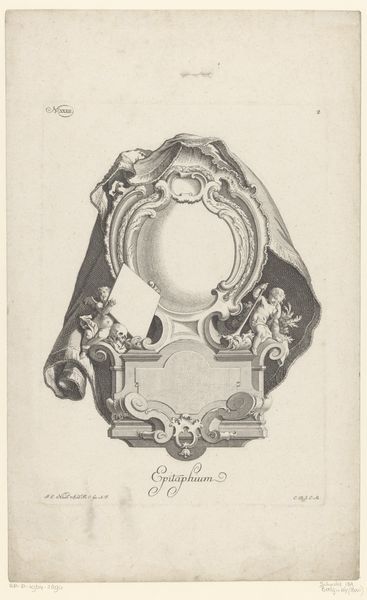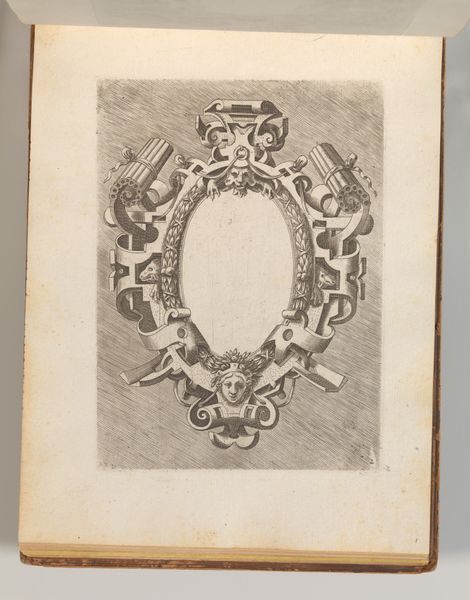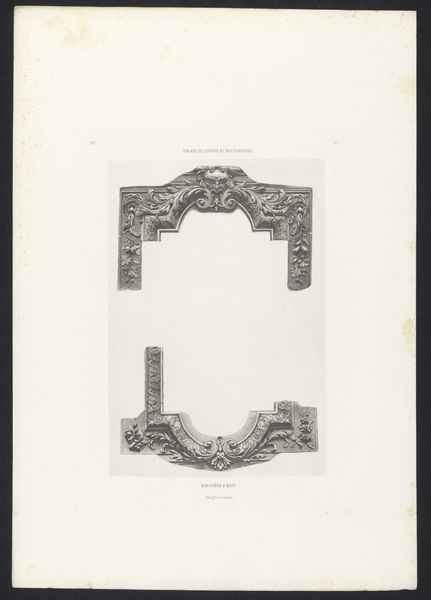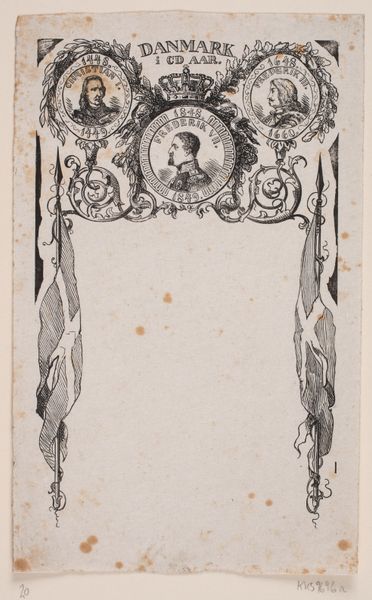
Targhe ed altri ornati di varie e capricciose invenzioni (Cartouches and other ornaments of various and capricious invention, page 31) 1773
0:00
0:00
Dimensions: Sheet: 7 7/8 × 10 5/16 in. (20 × 26.2 cm) Plate: 5 1/8 × 11 13/16 in. (13 × 30 cm) Overall: 8 1/4 × 10 5/8 in. (21 × 27 cm)
Copyright: Public Domain
This is a page from a book of prints made by Hans Vredeman de Vries in the 16th century, using etching. Notice the intricate details of the cartouche, adorned with grotesque masks, scrolls, and fruit garlands. To make this print, the artist would have coated a metal plate with wax, then drawn his design through it with a sharp needle. When dipped in acid, the exposed lines would be eaten away, leaving an impression. Ink is then applied, and the plate pressed onto paper. This process allowed for multiple, identical images to be produced quickly and cheaply. The use of etching reflects the rise of print culture, enabling the wider dissemination of ornament and design. As printed images became increasingly popular, it affected the modes of production, leading to the development of new visual languages and aesthetic forms. The availability of prints democratized access to design ideas, influencing architecture, furniture, and other decorative arts. By understanding the processes of production, we can appreciate how craft and technology intersect, shaping our visual world.
Comments
No comments
Be the first to comment and join the conversation on the ultimate creative platform.
